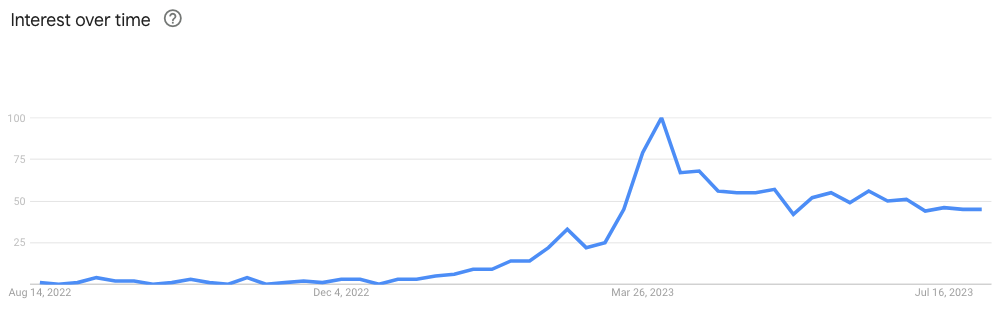In the ever-evolving landscape of technology, understanding the roles within a technology team can feel like a foreign language. As new roles and titles are born from wider technology advances, even those working in tech teams need to stay up-to-date with evolving roles and responsibilities.
A case in point: the Prompt Engineer. A job title that until March of this year had very little traction or public awareness – it was a niche role for AI-focused companies that are based around writing efficient instructions (’prompts’) for Large Language Models (LLMs), but as the integration of this kind of technology becomes more engrained in many of our core business tools, the interest (and recruitment) in Prompt Engineers has rocketed

Whether a Prompt Engineer is a role that would make up your long-term technology team is unknown, but for any business that is, or plans to, build technology in-house, these are some of the key roles and responsibilities that you’ll come across as you continue to grow.
Chief Technology Officer (CTO)
The CTO is like the captain of your tech ship. They’re responsible for crafting the overall technology strategy, making decisions about the technology stack, and ensuring that technical solutions align with the business goals. Think of them as the visionary guiding your tech journey.
We’ve explored the role of a CTO in detail across previous posts: What is a Fractional CTO? & A CTO is not a Developer
Web Developer / Software Engineer
Software engineers are the architects and builders. They write the code that brings your ideas to life. They work with programming languages to create applications, websites, and more. They take the blueprints of product scope and build it into reality.
Web developers often have a preference between front-end and back-end. Front-end developers work closely with UX Designers to turn any designs and wireframes into a functional user interface. Back-end developers focus much more on information, the data that your technology receives from users, and the data presented back to the same user. A developer that is competent across both disciplines is often referred to as ‘full-stack’.
Product Manager
Product managers are your project orchestrators. They bridge the gap between technical teams and business goals, communicating closely with all key stakeholders. They define features, prioritise tasks, and ensure the end product meets user needs. Think of them as the conductors ensuring everyone plays in harmony.
User Experience (UX) Designer
UX designers craft the user’s journey. They focus on making sure your technology is user-friendly, intuitive, and visually appealing. They design interfaces that users interact with, considering everything from layout to colour schemes. Think of them as the interior decorators of your digital space.
Quality Assurance (QA) Tester
QA testers are the bug hunters. They rigorously test your software to catch any glitches, errors, or unexpected behaviour by carrying out manual and creating automated tests. They ensure that the final product is reliable and functions as intended. They’re the detectives seeking out hidden flaws.
DevOps Engineers
DevOps – Development Operations – engineers are the efficiency experts. They streamline the development process, handling tasks like deployment, automation, and infrastructure management. They ensure your tech ship sails smoothly.
This list of roles is far from exhaustive and you’ll no doubt in time introduce tiers to each (junior, senior, etc), dependent on the size of your business and your technology offering. Other roles you’ll likely explore are data analysts and security and infrastructure specialists.